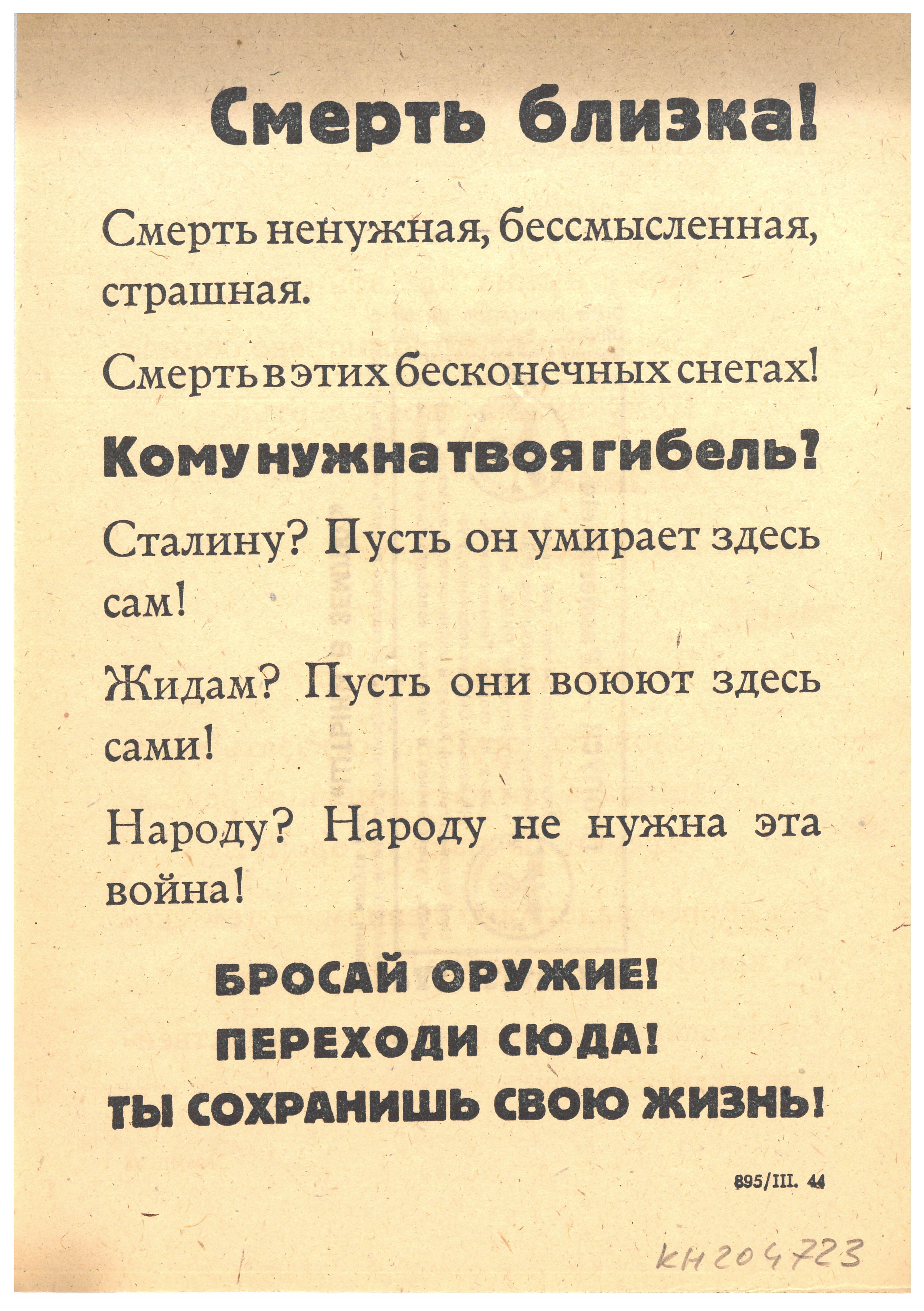Ein Propagandaflugblatt mit dem russischen Text:
"Der Tod ist nah! Der Tod ist unnötig, bedeutungslos, abscheulich.
Der Tod ist in diesem endlosen Schnee!
Wer braucht deinen Tod?
Stalin? Soll er hier selber sterben!
Den Juden? Sollen sie hier selber kämpfen!
Dem Volk? Das Volk braucht diesen Krieg nicht!
Lass die Waffen fallen!
Komm hier rüber!
Du bewahrst dein Leben!", soll die gegnerischen Truppen dazu bewegen, zur Wehrmacht überzulaufen.
Auf der Rückseite befindet sich außerdem ein Passierschein für Offiziere, Politarbeiter und Mannschaften der Sowjetarmee.
en

